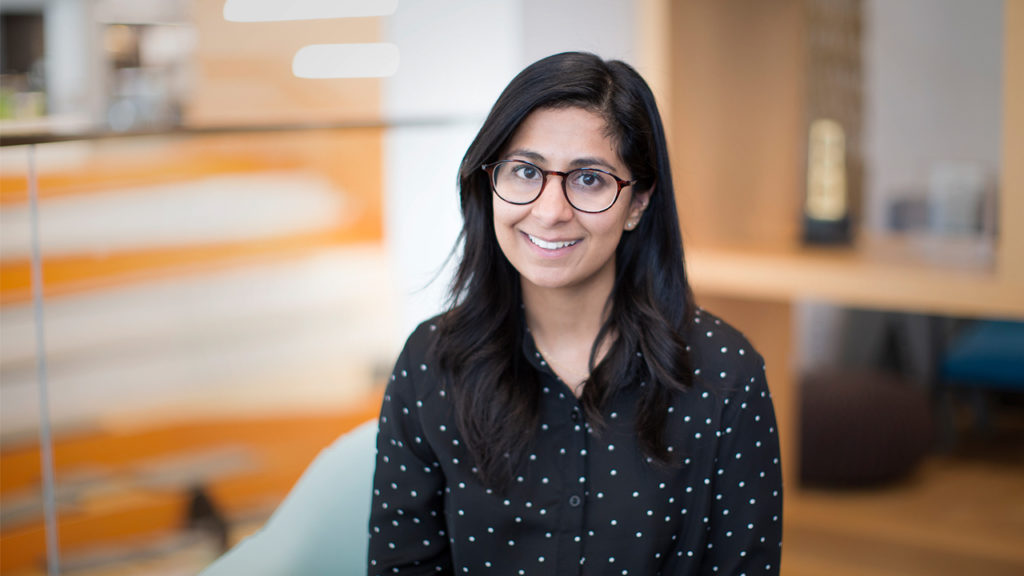
Deep learning models—the artificial neural networks meant to mimic the human brain—are notoriously opaque. Because of their complex design and multilayered processing nodes, it is hard for computer scientists to pin down exactly how the artificial neurons “think” and make their split-second decisions. This is often referred to as the black box of machine learning.
Some enterprising researchers are now working to break open this box and shine some light on evaluating different machine learning models. Sana Malik is one of them.
When you ask Malik what she hopes to do as a researcher, she is clear: “To improve people’s lives through more fair and accurate machine learning.” Her research on visual comparison of deep learning models breaks new ground in understanding these networks, linking test results back to specific neurons. And that kind of approach can do more than ease our curiosity. It could result in new technologies to help people who rely on machine learning to run their businesses. Learn more about Malik’s work in this Q&A with Adobe Research’s Meredith Alexander Kunz.
How did you first get interested in computer science?
I’ve always been interested in web design, which was my hobby growing up. Math was my favorite subject in school, but I also liked art and creativity. With that in mind, I initially chose architecture as my major, but my undergraduate university didn’t offer it. So I thought the next best thing would be civil engineering. I had to take an intro to computer science class as part of my coursework. That’s where I was having the most fun, really enjoying the creative problem-solving. Civil engineering was dull by comparison.
A professor suggested I think about having CS as my major, and I thought, “What kinds of jobs can you get as a CS major? Maybe this is just a hobby.” I wasn’t knowledgeable about the field.
One of the most fun classes I took was a short course on programming where we got to experiment with a small robot. We made our robot find the darkest point in a room, and then it would stop and do a little dance. I loved having the freedom to think about that and be creative!
Today, I still draw on my interests in design, math, and programming, with a focus on visual analytics.
What is visual analytics?
Data visualization is about representing the data. I am more interested in the entire experience: How do we surface not only the data but the model, and what the model is doing, as well as the interactions needed from the user? How do we display a machine learning model’s results as a holistic experience? Providing tools to do this could allow anyone gain smart, interesting insights from their data.
Could you tell us about a current project you’re focused on?
I’m working on a tool that compares different machine learning models. I want to make these models more transparent in a visual analytics framework. Many models are pre-loaded into this framework, and you can see which ones produce more false positives or negatives for your use case. We can systematically assess similarities and differences in model performance. Being able to compare models is especially important for non-expert users who have to choose a model, for example for sentiment analysis among product reviews. The system aims to create a representation of the model that can be linked with results.
Ultimately, we’d like to create an interactive tool that allows people to inspect the model, to see which neurons were highly activated. That would help users dig deeper to see how the model makes decisions. It’s experimental.

Why did you decide to join Adobe Research?
It was because of the Adobe Data Science Research Awards. My advisors got an award for my PhD work at the University of Maryland. I began working with Eunyee Koh, a senior research scientist at Adobe Research. When I came out to San Jose to present my results, Eunyee asked if I wanted to interview. I did, and I really liked it. It was such a different vibe from other places I interviewed at—it seemed like a much happier place.
One of the biggest draws is being able to publish my research. Adobe does a good job of balancing academia and industry.
And being able to mentor interns is the greatest thing! It’s an opportunity to explore a new area that maybe you wouldn’t be able to take a risk on otherwise. This year I have two direct interns, and I’m collaborating with another. We’ll try to publish a paper and apply for a patent. The best is having a demo to show product teams and say: “Look at this cool thing we just made!”
You presented an Adobe Research technology “Sneak” demo at Adobe Summit 2019. What was that like?
It was a super fun process! We had a giant team involved. It was nerve-wracking, too, prepping to present in front of thousands of people. My Sneak was about a project created by a large cross-functional team, including Eunyee and myself, called Data Unbound. It was described as “beautiful data everywhere.” Summit has Sneak voting via Twitter, and ours won the most votes. I was pleasantly surprised!